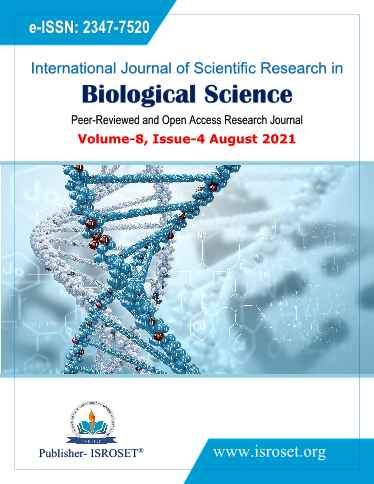Effect of oocyte with CLCG on embryo development and implantation rates after ICSI In Freeze-Thaw Embryo Transfer Cycles.
Keywords:
Cytoplasmic granularity, Embryo Quality, Embryo TransferAbstract
Introduction: Oocyte quality plays a major role in understanding the fertility potential of the female, which is primarily reflected by oocytes and their morphological features. A type of cytoplasmic abnormality exhibited by oocytes that can affect the oocyte quality is Centrally located cytoplasmic granulation (CLCG). Morphological variations of the oocyte may result due to different factors. Aim: To evaluate the consequences of CLCG on embryo development and implantation rates after ICSI in Freeze-Thaw Cycles. Methods: It was a retrospective study. A total of 418 day3 and 157 day5 patients who had undergone frozen-thawed cycles were recruited. Patients who had embryo transfer with CLCG were grouped as Test group (n = 100, n=90 day3 and n=38, n=42 day5. As per age <30 and age >31) and patients who had embryo transfer with normal oocytes morphology were grouped as the control group (n = 125, n=103 day3 and n=33, n=44 day5. As per age <30 and age >31) respectively. Results: Among the CLCG and the control group, there was no significant difference observed in the patient`s age, FSH, LH, and AMH. However, the maturation and fertilization rate among the patients age >31(P <0.05) years had a significant difference, and we also inferred that the CLCG did not affect the embryo development and implantation rate (P >0.05) in both groups respectively (age <30 and age >31). Conclusion: These results suggested CLCG might be a normal morphology of oocytes. There was no significant difference in embryo development patients with or without CLCG. The patients who freeze-thawed transferred CLCG embryos had a successful outcome.
References
Xiao-fang Yi1, Hong-Lin Xi2, Si-Lin Zhang1 & Jing Yang1. “Relationship between the positions of cytoplasmic granulation and the oocytes developmental potential in human.” 9:7215 | https://doi.org/10.1038/s41598-019-43757-8.2019.
S. Kahraman. “Relationship between granular cytoplasm of oocytes on pregnancy outcome following intracytoplasmic sperm injection.”2390-2393,2000.
Ayse Kendirci Ceviren1, Neval Tanriverdi Ozcelik1, Aysenur Urfan1, Levent Donmez2, Mete Isikoglu1. “Characteristic cytoplasmic morphology of oocytes in endometriosis patients and its effect on the outcome of assisted reproduction treatments cycles.”2014.
P. F ancsovits, * Zsuzsa g. Tothne, a. Murber, j. Rigo jr. And j. Urbancsek.“Importance of cytoplasmic granularity of human oocytes in vitro fertilization treatments.” Do! 10. 1556/abioi.63.2012.2.3.2011.
Saffet Ozturk.“Selection of competent oocytes by morphological criteria for assisted reproductive technologies.” Mol Reprod Dev. 2020; 87:1021–1036.2010.
P.F. Serhal1, D.M.Ranieri, A.Kinis, S.Marchant, M.Davies and I.M.Khadum. “Oocyte morphology predicts the outcome of intracytoplasmic sperm injection.” vol.12 no.6 pp.1267–1270.1997.
Jianjun Hu, M.D., Emanuela Molinari, Ph.D., Sarah Darmon, Ph.D., M.S., Lin Zhang, M.D., a “Predictive value of cytoplasmic granulation patterns during in vitro fertilization in metaphase II oocytes: Part I, poor-prognosis patients.” 2021.
Mohammad A. Khalili, Ph.D. “Role of oocyte morphology on fertilization and embryo formation in assisted reproductive techniques.” 2005.
Philippe Merviel1, Rosalie Cabry2,3, Karen Chardon3, Elodie Haraux3, Florence Scheffler2,3, Naima-belhadri Mansouri2, Aviva Devaux2,3, Hikmat Chahine4, Véronique Bach3, Henri Copin2 and Moncef Benkhalifa2,3. “Impact of oocytes with CLCG on ICSI outcomes and their potential relation to pesticide exposure.” DOI 10.1186/s13048-017-0335-2.2017.
Basak Balaban1, Bulent Urman. “Effect of oocyte morphology on embryo development and implantation.” Vol 12. No 5. 2006 608-615.2006.
Veeck, L.L. Oocyte assessment and biological performance. Ann. NY Acad. Sci., 541, 259–274.1988.
Van Blerkom, J., Davis, P., Merriman, J. and Sinclair, J. “Nuclear and cytoplasmic dynamics of sperm penetration, pronuclear formation and microtubule organization during fertilization and early preimplantation development in the human.” Hum. Reprod. Update, 1, 429–461.1995.
Thibault, C. “Are follicular maturation and oocyte maturation independent processes?” J. Reprod. Fertil., 51, 1–15.1977.
Downloads
Published
How to Cite
Issue
Section
License

This work is licensed under a Creative Commons Attribution 4.0 International License.
Authors contributing to this journal agree to publish their articles under the Creative Commons Attribution 4.0 International License, allowing third parties to share their work (copy, distribute, transmit) and to adapt it, under the condition that the authors are given credit and that in the event of reuse or distribution, the terms of this license are made clear.







